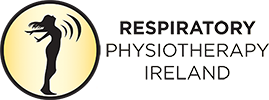Inhalers are commonly prescribed for patients with respiratory conditions and they are very effective at delivering the medication straight to the lungs where it is needed.
Using a correct inhaler technique is important so you get as much as your prescribed medication into your lungs as possible. This will allow the drug to work as effectively as possible.
Inhalers come in all sorts of different shapes and sizes, our respiratory physiotherapists are experienced in the full range of inhalers available, and will be able to run through with you the most effective technique for using your inhaler to ensure you to get maximal benefit.
Incorrect Inhaler Technique
- May result in the full dose failing to reach the target area of the lung reducing any potential benefit of the medication
- Can increase the risk of severe flare-ups and hospitalisation for people with asthma and COPD
- May lead to poor symptomand disease control
- Increases the risk of side effects like oral thrush
Correct inhaler Technique
- Depends on the inhaler type as the techniques of inhaler use are not the same for all inhaler devises.
- Allows the correct dose of medication to reach the lungs where it can work effectively
- It gives you better control of your condition
Respiratory Physiotherapists
- Experienced in the full range of inhalers and can advise on the various techniques needed to use each inhaler already prescribed
- Assess your technique, and then provide advice on how it can be made more effective
- Provide a comprehensive approach with a step by step practical hands-on demonstration, and provide verbal and written instruction on the use of the inhalation devices.
- Re-educate and re-train regularly on review to reinforce correct technique
- Educate patients on the rationale as to why they need the inhaler and the importance of its regular and pertinent use.
- Improve your confidence in taking your inhaler ensuring you are using it to best effect.
- Advise on care and maintenance of inhalers and spacers
- Assess dexterity if difficulty manipulating devices
Modifications and good practice points which may ensure coorect inhaler technique
These will depend on the type of inhaler device and there are many different approaches to make your technique more effective.
- Posture
- Holding the device the correct way
- Remove cap on inhaler (if device has one)
- Check dose counter (if device has one)
- Shake your inhaler prior to use if required
- Pierce the capsule once (if device has one)
- Exhale (breathe out) away from imnhaler before inhalation
- Sealing the lips firmly around the mouthpiece
- Use of adjuncts g.g. addition of a spacer may allow better intake of the medication into the lungs
- Duration and timing of inhalation which may activate your medication
- Duration of inspiratory hold (length you hold your breath in)
- Number of inhalations to get the full dose
- Remove used capsule (if device has one)
- Close the inhaler after use (depending on type of device)
- Rinse mouth with water if taking inhaled corticosteroids
- Ensure inhalers are not past the expiry date or empty

